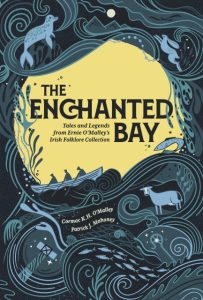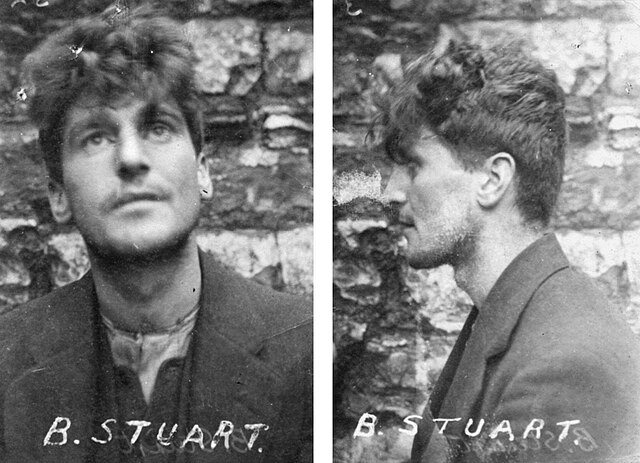It is a little-known fact that Ernie O’Malley, renowned for his role in Ireland’s revolutionary struggle, was also a passionate collector of Irish folklore. “The Enchanted Bay: Tales and Legends from Ernie O’Malley’s Irish Folklore Collection,” by Cormac K. H. O’Malley and Patrick J. Mahoney, is a testament to O’Malley’s multifaceted legacy.
Ernie O’Malley (1897-1957) is usually associated with his significant military role in the Irish War of Independence and Civil War and his memoirs about that period (On Another Man’s Wound and The Singing Flame), but he was also an art critic, a military historian, and now as the newly published

Collection. By Cormac K. H. O’Malley and Patrick J. Mahoney is available on Amazon.
book, The Enchanted Bay: Tales and Legends from Ernie O’Malley’s Irish Folklore Collection shows us, he was also a gatherer of legends, myths and stories.
The tapestry of tales in this book, which centers on O’Malley’s native Clew Bay and its environs, was transcribed by his son Cormac. They maintain the unique voices of local communities, conjuring an arcane, fascinating world that is slipping further from memory.
These tales are linked to local people and places and cover interactions with fairies on land and sea, fishermen’s drownings, landlords’ abuse of power, evictions, the Great Hunger, communal resistance and rebellion, and historical figures from Cromwell to Lord Lucan.
Some of the tales are told in the first person as the storyteller recalls incidents such as a family’s eviction, An Fear Gorta, or dealings with a local doctor. In many, it is the little man versus the big man, and often the little one wins out by cunning.
Tales like these abound all around Ireland, but in this book, the addition of maps and photographs helps recreate a vivid impression of life in rural Ireland in the past and the oral tradition that is the heart of Irish storytelling.
In the following tale, we encounter An Féar Gorta, whose name means “the Hungry Man.”This ethereal being is associated with the darkest times in Irish history when hunger stalked the land.
An Fear Gorta
Me daddy, when he was a young man, and me mammy was married to him then, bought a cow at the Westport fair from a man by the name of David Brown of Seaview, near Kilmeena. After the fair, himself and me mammy were coming home to Inishnakillew, and it happened to be evening when they got as far as Lishen Ruadh in Rossakeeran, near Moyna, and begorra, he suddenly got weak, and he called on her for help to keep him from falling.
‘William,’ says she, ‘what’s wrong with you?’
‘Well,’ says he, ‘I don’t know, but I’ve lost the walk.’
She often told me that she never got it harder than to bring him from there to Claggan. His legs gave from under him in Claggan, up above by Willie Gibbons’s house. She went in to Gibbons and told him what was the trouble. She was a young woman at the time and didn’t know what was wrong.
‘You have an féar gorta, boy,’ says Gibbons, the minute me daddy went in and sat down. Gibbons went over to the cupboard, and there was a bageen of oatmeal within.
‘Here,’ says he, ‘hold out your hand,’ and he held his hand out and some of the oats dropped in to his hand. ‘Eat on that and chew it well,’ and he threw the rest of it in the fire.
They remained there till they had their supper, and then they walked in here to
Inishnakillew with their cow comfortable and hearty. ♦


Leave a Reply